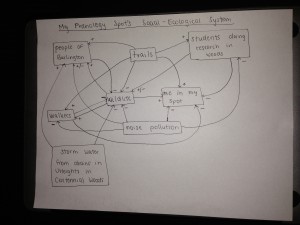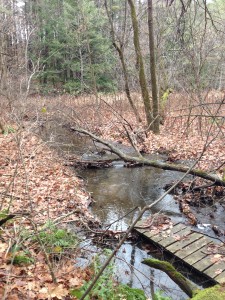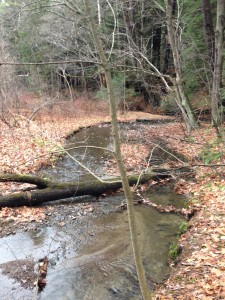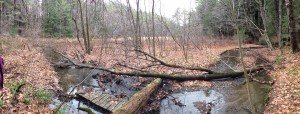After observing my phenology spot in Centennial Woods for the past two semesters, I feel as though I have come to know this place on many different levels: physically, personally, theoretically, historically, etc. With this sense of place I have developed, I feel as though I am capable of relating my spot in the woods to most of the theoretical perspectives we learned about in NR 2. To begin, limits apply to this space. There is a limit to how many people may occupy my phenology spot without completely trampling it. There is a limit to personal freedoms in the woods. There are rules in place that one must adhere to because the woods is the legal property of an established institution, known as the University of Vermont. This is how limits ties into another theoretical perspective–institutions. Institutions, in this instance, set up limits for individuals. Additionally, social construction ties into the idea of a UVM “natural area.” Centennial Woods is considered a natural space, which is true, however, human beings control the way the woods look, its boundaries, the species inside it, and how human beings are allowed to interact with the space. Ethics also play into the functioning of my phenology spot in Centennial Woods. Is it ethical to place a contained patch of “wildlife” in the middle of the biggest city in Vermont thereby constricting much the wildlife that lives there? Is it ethical for forestry students to disturb the forest community in the parts of the forest where paths do not exist? Is it ethical for myself to trample the ground as I make my way down the hill towards my phenology spot just to take a couple of pictures to get a grade in a class? There is so much more to consider about my phenology spot in Centennial Woods than just the physicality of the space asi this NR 2 blog project encourages.
Over these past two semesters, I have gotten to know the “citizens” of my spot, as well. These citizens include nonhuman beings such as the ferns that cover the ground, oak trees that reach toward the sky, the two downed trees that stretch across the brook, making a bridge for the chipmunks who scamper around the area. Perhaps even the small fish that pass through my spot on their way to other parts of the brook. These citizens also include the human beings who enjoy this “natural area.” These are students, professors, families, joggers, walkers, philosophers, healers, hoodlums, and friends of nature.
In terms of how to establish a sense of care or shared trust in the area for the indefinite future, there are a few ways to go about this of which I’ve thought. Ideally, I would say the best way to create a sense of care among future human visitors would be to show them the delicate intricacies of my spot, and hopefully they will adopt this sense of admiration for the way of life there and respect and steward the area, as well. Otherwise, perhaps larger institutions, such as UVM (who “owns” the woods), could work to instill a greater sense of stewardship and respectful attitudes towards nature in its students. This way, the ecosystem in Centennial Woods may continue to thrive as it is now, and may even reduce the amount of illegal or damaging activities that occur in the woods on regular basis.




